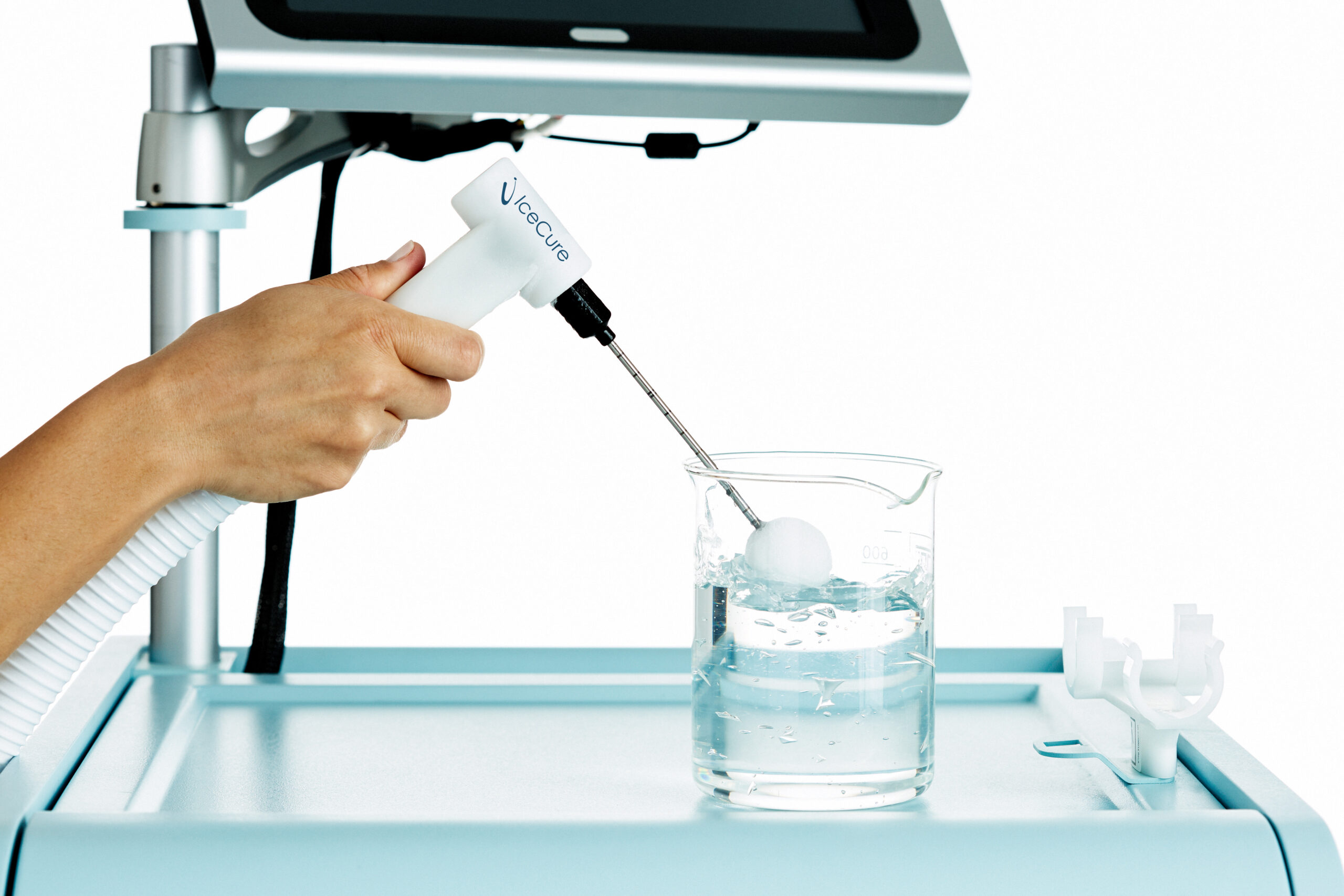LUNG
Choose Cryoablation for Lung Cancer
Cryoablation for lung cancer or benign tumors is a safe and effective minimally invasive procedure providing an additional treatment option to higher-risk surgical interventions or SBRT. Using CT imaging, a specialized cryoprobe (like a thin hollow needle) is guided and inserted into the tumor. Freezing temperatures are applied that grow an ice ball to engulf the tumor and destroy it leaving healthy tissue unharmed.
ProSense’s minimally invasive cryoablation procedure provides patients and physicians with an improved treatment experience with minimal pain, reduced scarring, and accelerated recovery.
- Rapid recovery: One day of hospital stay on average, helping lower hospital costs with some patients able to go home that same day
- Short procedure: Up to 2 hours for a cryoablation procedure helping save physicians time and reduce waiting times (surgery is typically 2- 6 hours)
- Minimal pain and discomfort: Cooling from the cryoablation itself reduces pain
- Can be performed under light sedation: Eliminates risks from general anesthesia required during surgery
- Works alongside existing chemotherapy, surgical resection, SBRT, or immunotherapy
- Repeatable procedure: Allows for further treatment and potentially reduces the impact of higher local recurrence after a single ablation
- Easy to use and efficient: Powerful liquid nitrogen freezing without gas line restrictions, user friendly touch screen system and unique single cryoprobe system helps saves time and cost


How does lung cancer cryoablation work?
A thin cryoprobe is directly inserted into the tumor. A freezing coolant material, liquid nitrogen or argon gas, is pumped into the cryoprobe which grows an iceball engulfing the tumor and killing the cancerous tissue in the lung.
The minimally-invasive procedure is performed using imaging to navigate to the tumor and confirm the cryoprobe is in the correct location for treatment. The physicians will also ensure that the targeted tissue is completely engulfed in an iceball with adequate margins for complete cell destruction.
A triple freeze protocol of 3 freeze/thaw cycles is recommended for the cryoablation of lung cancers with low recurrence and complication rates (4). In some cases, a 4th cycle will be necessary. The time of procedures should last 1 ½ to 2 hours.
As the lung consists mostly of air spaces, the first freeze cycle is important to create an optimal environment for heat conduction. It is thought that blood leakage from the frozen area into the lung parenchyma optimizes the environment for heat conduction by pushing out the air. This makes the second cycle of freezing more successful in forming a larger iceball and a third cycle is necessary for more tumor destruction.

